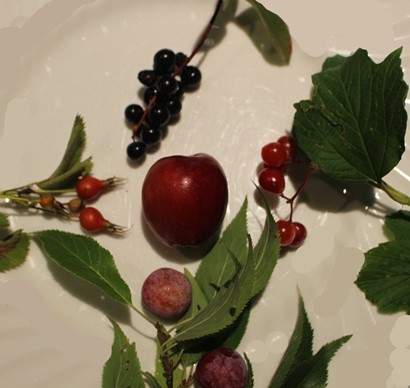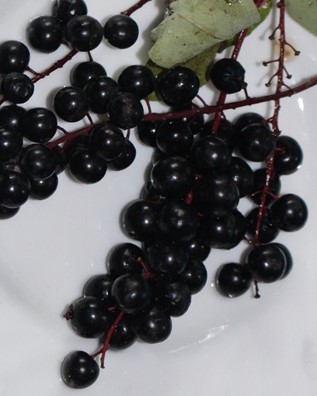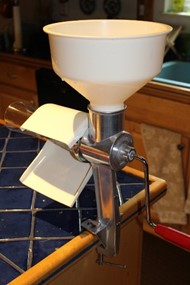Sometimes it’s the simple things that teach us clearly and touch us dearly.
So I walk for less than a mile from our home and find myself on a gravel path along the Highline Canal, an abandoned farmer’s canal that in its heyday carried irrigation water from the Platte Canyon Reservoir 20 miles south of here to farmers 50 miles north of here. The canal is no longer used for irrigation purposes and has been acquired by the Denver Water Board. The Water Board maintains the trail and occasionally fills the canal with water to sustain the riparian vegetation that grew up naturally along the banks – including many 50-100 year-old thirsty cottonwood trees that form a shady canapé over the trail on hot summer days.
The trail has become a favorite walking/biking/horseback riding path for us suburban dwellers. We can experience and enjoy wild life and natural plant life that have found this abandoned waterway to be a niche for their continued existence. This time of the year, along our local section of the canal, a number of the native plants are displaying their colorful fruit. Portions of the north slope of the gravel trail are lined with wild Chokecherry bushes – some 5-10 feet high – laden with fall ripened berries. Perhaps the Chokecherries are an acquired taste. Nevertheless they make their perennial appearance and the small black pearls are considered edible by most non-human and a few human creatures that pass by. So what could be more sustainable than harvesting some of these native Chokecherries grown without human irrigation or fertilization, just the Sun, and then preserving / canning their fruit as a jam – using only solar energy? Let’s see how that works for us.
 |
 |
|
Assorted Fruit Visible along the Canal |
Ripened Chokecherry |
The poet might describe the shiny Chokecherry berry as a benevolent offering of life sustaining energy (food) to the rest of nature – to the birds, bears or even biped gatherers.
The biologist might describe the Chokecherry fruit as a clever, effective way for this variety of autotroph (plant) to disguise its seed and make it worthwhile for a heterotroph (animal) to ingest and conveniently carry the seed to a faraway place for further propagation of the Chokecherry species.
The naturalist / permaculturalist might describe the Chokecherry berry as a wonderful native drought resistant perennial source of fruit that can be harvested and preserved as a tasty jam or jelly.
The spiritualist might describe the Chokecherry fruit as another example of natural grace – how nature captures the energy of Father Sun (sunlight) using the resources of Mother Earth (water, CO2, minerals) and offers that energy for the sustenance of other living systems.
Sept 10. What a glorious fall morning to be out walking along the Highline Canal trail picking wild Chokecherries.
A neighborly women inquisitively asked, as she walked by with her Lab straining at its leash, “What is it you’re picking?”
I replied, “They’re Chokecherries. Going to make some jam out of them.”
“Oh. I always wondered what they were.”
After about ½ hour of picking, my backpack was getting noticeable heavier. As it turned out, I brought home nearly 20 pounds of fruit for this year’s experiment in preservation. Before leaving, I glanced up and down the trail. The same amount of fruit still seemed to be clinging to the bushes as when I arrived – an indication of how meager my harvest was.
What I came to realize as I was stripping the clusters of fruit from their stems, was that I was experiencing a rare and intimate connection with nature. As a city dweller, all the other food/energy/nourishment I put into my mouth involves the intervention of many intermediary hands – too many to even keep track of. But not these Chokecherries – they were not leaving their bush to enter the craw of a crow or bowels of a bear. Rather they were soon to enter the sterilized belly of a Ball™ jelly jar – by my hands alone.
For this next experiment in living sustainably, my plan was to use only solar energy to make Chokecherry jam. Let’s see how it turned out.
| Steps in Making Jam |
Source of Energy |
Equipment / Tools /Materials |
Comments |
| Grow Fruit | Sun. | Earth resources (CO2, water, other elements) | The Chokecherry is a native plant and requires no human intervention. We can be of mutual benefit by simply not destroying this plant (chopping it down, spraying it with herbicide, pesticide, fertilizer, or altering the climate, etc.) |
| Find and Harvest fruit | Sun → Food → Human effort. | None | The fruit is easily found and harvested. My personal experience was that Chokecherry berries are one of the easiest fruit to pick. You simply grasp the top of the stem of a cluster of berries with your thumb and forefinger and slide your hand down – the berries fall off and collect in the palm of your hand. Someone described it as “milking a goat.” |
| Transportation from the source (bush/tree) to home | Sun → Food → Human effort. | Reusable “container” e.g. backpack | The human is of course powered by food that in turn is generally stored solar energy. Humans evolved as heterotrophs who acquire the energy they need to exist by taking in the stored energy of autotrophs (as a herbivore) or other heterotrophs (as a carnivore) or both (as an omnivore). Fundamentally the human is powered by stored solar energy (food) |
| Sort out leaves | Sun → Food → Human effort. | None | The human is powered by stored solar energy (food).Leaves are composted. |
| Rinse in clean water | Sun → Food → Human effort. | Clean cold water | In our case, the water is snow melt, purified and pushed into our homes using pumps driven by electrical power. 80% of the local electrical power is generated by a for-profit utility that burns fossil fuel to make steam to drive turbines/generators that make the electrical power. 20% is generated from inexhaustible sources (solar PV, wind). Rinse water becomes “gray” water, usable for plant life. |
| Boil on electric stovetop | Sun → Solar PV → Electrical Power → Heat (Thermal Energy). | Rooftop Solar PV modulesElectric Stovetop | Solar panels, electric stovetop and support equipment is manufactured from resources “Borrowed” from the Earth. When I am through using these resources, it is my responsibility to return/recycle every atom of this equipment for use by future generations. |
| Separate out seeds | Sun → Food → Human effort. | Food strainer (hand powered), Human effort.  |
A human powers this “tool.” The human in turn is powered by stored solar energy (food). A one-time investment in energy (in this case probably fossil fuel) is needed to produce the food processing aid (food strainer). But this item is not consumed. It has been reused for three years (also by friends and neighbors) with no apparent loss in function. The item will be returned to the commons after we are through using it (Reused, Recycled). Seeds, leaves are composted. |
| Add Pectin & sugar |
Sun → Food → Human effort. Sun → Photosynthesis→ Sugar. Ancient Sunlight → Fossil Fuel → Fire → Transportation Engines. |
Pectin, Sweetener (sugar/honey/agave)  |
Out of laziness, I chose to use “commercial” pectin and sugar purchased at a local store. I could have made my own pectin as described in Appendix A. http://www.pickyourown.org/makeyourownpectin.htm The pectin story discussed in Appendix A further illustrates our current unsustainable human behavior. Out of laziness, I choose to use processed sugar rather than honey or other natural sweetener. After watching the documentary “Fed up” co-produced by Katie Couric, it’s a lot harder to add the enormous amounts of sugar called for in most jam/jelly recipes.As a result, there is some TBD fossil energy consumed to produced and transport the pectin and sweetener to our local store. I did use an electric vehicle powered with solar generated energy to transport the pectin and sugar from the store to home. |
| Bring to boil | Sun → Solar PV → Electrical Power → Heat (Thermal Energy). | Rooftop Solar PV modulesElectric Stovetop | See reuse/recycle comments above. |
| Fill canning jars | Sun → Food → Human effort. | Glass jars, metal lids | A one-time investment in energy (in this case probably fossil fuel) is needed to produce the food processing / preservation equipment (glass jar, metal lids, boiling canner, etc.) These item are not consumed and have been Reused for several years (also by friends and neighbors) with no apparent loss in function. These item will be returned to the commons after we are through using them (Reused, Recycled). Although glass is currently manufactured from Earth’s resources using fossil fuel (natural gas) fired furnaces, there is no reason the source of heat couldn’t be electrically heated arc furnaces. |
| Process jars in boiling water |
Sun → Solar PV → Electrical Power → Heat (Thermal Energy). Sun → Food → Human effort. |
Canning equipment/aidsRooftop Solar PV modules | See reuse/recycle comments above. |
| Cool | Passive | None | N/A |
| Store for later use | Sun → Food → Human effort. | Storage space  |
Storage is required in a moderate temperature environment to avoid freezing (freezing would likely result in breakage of the glass containers). |
| Eat | Sun → Food → Human effort. | Reusable utensils |
Summary
This simple “canning” process resulted in a strange realization that might be described as a sense of oneness or connectedness with nature.
As I was picking the Chokecherries, it occurred to me that this was a unique opportunity to be present at the source of one’s food and then travel along with it through all the food processing steps to where it ends up on the cupboard shelf. As a result of experiencing this processing journey first hand, it was if a spiritual connection had been made with yet another part of nature. That connection will remain with me months from now when I re-open the jars and spread the Chokecherry jam on a warm piece of morning toast or a short stack of Swedish pancakes.
This simple “canning” process brought back memories of my parents and grandparents generation as well as the stories of indigenous people who harvested Chokecherries as they lived sustainably off this land – all of whom contributed to the evolution and perfection of this preservation process that we enjoy but often take for granted today.
Although I did not fully succeed in putting up true “solar jam,” (with zero expenditure of fossil fuel,) this simple experiment illustrated that with careful reuse of today’s “canning tools” the Sun can (and did) provide all the energy we need – should we choose to use it. Just another illustration that it is possible to ‘Live without Fire’ – without burning ancient hydrocarbons – without dumping more greenhouse gases into our atmosphere – without creating the many other anthropogenic injustices.
Room for Improvement
As discussed in more detail in Solar Jam (II) – Appendix A: The Pectin Story, importing commercial pectin from Denmark via a current day container ship was a small mistake from a practical perspective, but it was an enormous screw-up ethically /morally when we try to live sustainably.
But sometimes it’s the simple things that teach us most clearly and touch us most dearly.
I love being partnered with someone who makes an even bigger deal out of everything than I do!
[…] is a continuation of a previous blog on Solar Jam. Because we used a commercial form of pectin that was imported from Denmark, we decided to think […]